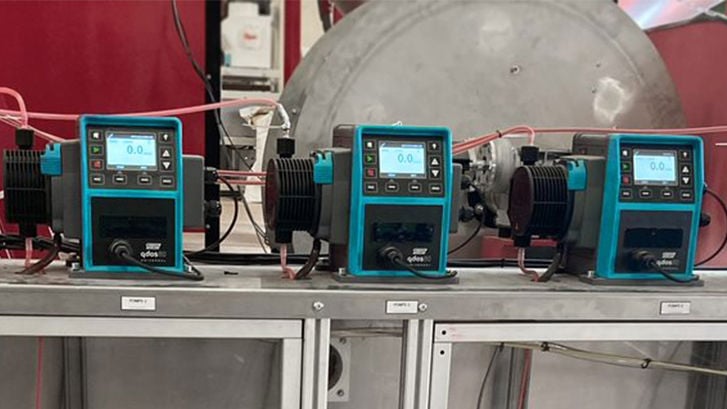- 新闻
- Seed coating machine manufacturers and users benefit from correct pump choice
- Peristaltic pumps have operational advantages over PC and diaphragm pumps for all major application criteria
- Seed treatment represents significant global business for WMFTG
Seed treatment is a long-established and proven way for farmers to battle crop diseases and destructive insects, while simultaneously encouraging germination and promoting early season growth. The pumps within seed coating machines have a range of challenges to overcome and demands to meet, so careful assessment at selection stage is vital.
The treatment applied to seeds is typically an antimicrobial or fungicidal chemical coating or dressing. By applying fungicides, for example, it is possible to provide effective protection from many seed and soil-borne plant pathogens, guarding against seed rots and blights that occur during storage or after planting. Similarly, the application of insecticides help to fight pests that strike early in the season when seedlings are most vulnerable.
Further advantages
Beyond the battle against disease and insects, some seed treatment also improves planting characteristics. For instance, the addition of thin, water permeable polymers in the film coating process aids the flow of seed when sowing to improve planting uniformity.
Seed treatment can even improve yield and quality. By way of example, the use of microbial inoculants helps to improve nitrogen fixation in legumes. This process is beneficial as nitrogen is an essential element of life, and nitrogen availability often limits crop yields. In addition, the application of chemical regulators can improve the plant’s ability to tolerate stress-inducing weather conditions in the early stages of growth.
This strategy is environmentally friendly as it eliminates the need to blanket-spray crops in the ground. There is also a cost advantage. Many treated seeds, such as soya bean, are only good for that planting season, so seeds that remain unsown will then require incineration, a process that costs approximately twice that of producing the seed.
Seed treatments may be applied commercially by the seed industry, or in some cases “on farm”. Major seed merchants treat seed in bulk at specially designed plants. Bulk coatings are stored in large tanks and pumped to the coating machine “pots” as they are required.
On farm treatments take place just prior to sowing, typically using portable seed coating machines driven to farms at planting time.
The process
Weighed seed enters a cone whereupon a PLC drives the pump to dispense the right amount of chemical into the coating drum. Seeds receive spray on the way into the drum or within the drum itself. With the right pump it is possible to apply all treatments - including diluting agents, dyes, polymers or other pelleting and coating substances - subsequently and/or at different times and intensities.
Pumps face several challenges in seed treatment applications. Polymer, for instance, is difficult to handle for many pump types, as are pigment-based colours/dyes due to their abrasiveness. The Environmental Protection Agency (EPA) requires seeds coated with any form of chemical or biological treatment to use differentiating colours, which helps with identification.

Pump selection
The question arises as to what pump type best fulfils these needs. As part of the evaluation process, seed treatment machine manufacturers must decide what benefits are most desirable, both for themselves and end-users. Typically, selection depends on the ability to deliver production cost savings, high productivity and high seed yield, while minimising downtime and maintenance requirements. Against all of these criteria, a peristaltic pump will easily outperform comparable progressive cavity or diaphragm pumps in terms of both flow precision and reliability.
Benefits of peristaltic
Peristaltic pumps are simple to install and quick to maintain, making them ideal for use in seed coating machinery. Not only can peristaltic pumps run dry, but the fluid only contacts the bore of the hose or tube, making abrasive fluids such as pigments, easy to handle. Furthermore, varying viscosities of the chemical treatments have no effect on flow accuracy, so chemical overshoot is never likely to be a problem.
Importantly, because chemicals are contained within the pumps fluid path, there is no risk to operators when cleaning or maintenance is required.
Seed treatment represents significant global business for Watson-Marlow Fluid Technology Group (WMFTG). Numerous large seed treatment equipment and chemical companies today invest in the benefits provided by Watson-Marlow’s range of peristaltic pumps and their extensive experience in the industry.
For low-pressure feed pump applications, Watson-Marlow Qdos, as well as its 500 and 600 series tube pumps, prove popular, while for higher flow/viscosity transfer, Bredel hose pumps have become the industry’s first choice.
With so much riding on getting it right, few can ignore the benefits available from investing in peristaltic pump technology for their seed treatment applications.
